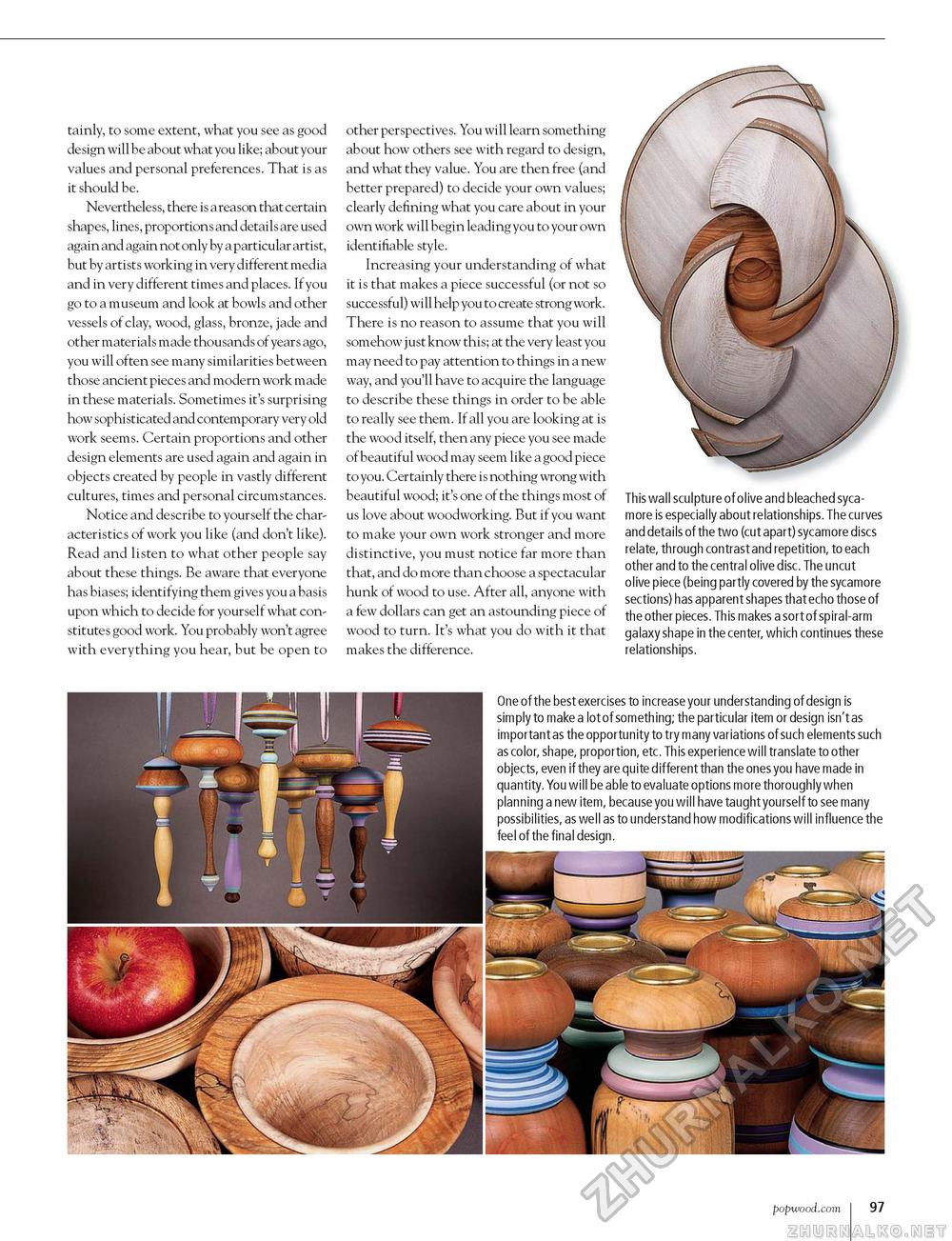Popular Woodworking 2005-10 № 150, страница 101
tainly, to some extent, what you see as good design will be about what you like; about your values and personal preferences. That is as it should be. Nevertheless, there is a reason that certain shapes, lines, proportions and details are used again and again not only by a particular artist, but by artists working in very different media and in very different times and places. If you go to a museum and look at bowls and other vessels of clay, wood, glass, bronze, jade and other materials made thousands of years ago, you will often see many similarities between those ancient pieces and modern work made in these materials. Sometimes it's surprising how sophisticated and contemporary very old work seems. Certain proportions and other design elements are used again and again in objects created by people in vastly different cultures, times and personal circumstances. Notice and describe to yourself the characteristics of work you like (and don't like). Read and listen to what other people say about these things. Be aware that everyone has biases; identifying them gives you a basis upon which to decide for yourself what constitutes good work. You probably won't agree with everything you hear, but be open to other perspectives. You will learn something about how others see with regard to design, and what they value. You are then free (and better prepared) to decide your own values; clearly defining what you care about in your own work will begin leading you to your own identifiable style. Increasing your understanding of what it is that makes a piece successful (or not so succe ssful) will help you to create strong work. There is no reason to assume that you will somehow just know this; at the very least you may need to pay attention to things in a new way, and you'll have to acquire the language to describe these things in order to be able to really see them. If all you are looking at is the wood itself, then any piece you see made of beautiful wood may seem like a good piece to you. Certainly there is nothing wrong with beautiful wood; it's one of the things most of us love about woodworking. But if you want to make your own work stronger and more distinctive, you must notice far more than that, and do more than choose a spectacular hunk of wood to use. After all, anyone with a few dollars can get an astounding piece of wood to turn. It's what you do with it that makes the difference. This wall sculpture of olive and bleached sycamore is especially about relationships. The curves and details of the two (cut apart) sycamore discs relate, through contrast and repetition, to each other and to the central olive disc. The uncut olive piece (being partly covered by the sycamore sections) has apparent shapes that echo those of the other pieces. This makes a sort of spiral-arm galaxy shape in the center, which continues these relationships. One of the best exercises to increase your understanding of design is simply to make a lot of something; the particular item or design isn't as important as the opportunity to try many variations of such elements such as color, shape, proportion, etc. This experience will translate to other objects, even if they are quite different than the ones you have made in quantity. You will be able to evaluate options more thoroughly when planning a new item, because you will have taught yourself to see many possibilities, as well as to understand how modifications will influence the feel of the final design. popwood.com i 97 |








